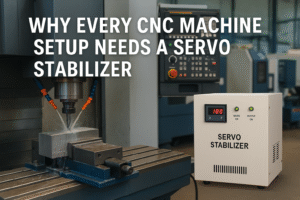
In the ever-evolving field of manufacturing and metal fabrication, welding technology continues to push boundaries for efficiency, precision, and quality. Among the advanced tools reshaping welding processes is the fiber laser welding machine. While traditional welding techniques have served industries for decades, fiber laser welding offers a remarkable alternative with distinct characteristics that set it apart. This article delves deeply into what makes fiber laser welding machines different and why they are gaining traction across diverse industrial applications.
Understanding Fiber Laser Welding Machines
A fiber laser welding machine uses a high-powered laser beam generated through an optical fiber to join metal components. Unlike conventional welding, which relies on heat generated by an electric arc or flame, fiber laser welding concentrates energy into an extremely narrow beam, enabling precise and fast metal joining.
The laser beam produced by the fiber laser welding machine is coherent, monochromatic, and highly directional, allowing it to be focused on a tiny spot with intense power density. This focused energy melts and fuses metals with a narrow heat-affected zone, resulting in clean, precise welds that often require little to no post-processing.
How Does Fiber Laser Welding Differ Fundamentally?
-
Energy Delivery and Control:
The core distinction lies in how energy is delivered to the workpiece. Traditional welding methods—such as MIG (Metal Inert Gas), TIG (Tungsten Inert Gas), or stick welding—generate heat through electrical arcs or flames, which can be less controlled and less focused. In contrast, a fiber laser welding machine delivers energy through a laser beam that can be precisely modulated in terms of intensity and duration. -
Heat-Affected Zone (HAZ):
The heat-affected zone refers to the area of the metal that experiences a change in properties due to welding heat. Conventional welding generally produces a wider HAZ because the heat is diffused over a larger area. The fiber laser’s concentrated beam minimizes the HAZ, preserving more of the base material’s original properties, which enhances structural integrity. -
Speed and Precision:
Fiber laser welding machines can perform welds much faster than traditional methods. The narrow and intense beam allows for rapid melting and solidification, speeding up production cycles. Moreover, the precision of the laser enables welding of extremely small or complex parts that may be difficult with conventional welding. -
Material Compatibility and Thickness:
While traditional welding can be limited by material thickness and type, fiber laser welding machines excel in handling thin and thick materials alike, including metals with high reflectivity such as copper and aluminum, which are notoriously difficult for some welding methods. -
Automation and Integration:
Fiber laser welding machines are highly compatible with automated systems such as robotic arms and CNC machines. This integration facilitates repeatability, reduces human error, and supports complex welding patterns that require high consistency.
Applications Illustrating the Fiber Laser Welding Machine’s Impact
Industries ranging from automotive to aerospace, electronics, and medical devices have embraced fiber laser welding machines for specific tasks that demand superior weld quality and precision. For instance:
-
Automotive Manufacturing:
Fiber laser welding is used to join car body panels with minimal distortion, ensuring lightweight yet strong assemblies. -
Electronics:
Small components require delicate welding that does not damage surrounding materials, making fiber laser machines ideal. -
Aerospace:
Critical components often made from exotic alloys benefit from the narrow HAZ and precise control offered by fiber laser welding. -
Medical Devices:
The ability to weld tiny and complex components without contamination is crucial in medical device fabrication.
Why Consider a Fiber Laser Welding Machine for Your Operation?
Though many factors influence the choice of welding equipment, the fiber laser welding machine’s distinct operational qualities often make it the go-to solution for modern manufacturing challenges. The precision and speed provided by fiber laser welding translate into enhanced productivity and superior product quality.
Its adaptability to a wide range of metals and thicknesses broadens its usefulness, while integration with automation technology aligns it perfectly with Industry 4.0 manufacturing trends. This makes it not only a tool for today but a strategic investment for future-ready factories aiming to optimize production workflows and quality standards.
Technical Insights Without the Complexity
To appreciate the fiber laser welding machine’s value, it’s useful to understand a bit about how it functions technically:
-
The laser source generates light that travels through an optical fiber, which can be flexible and easily routed in the factory environment.
-
This fiber-delivered light is directed via a focusing head onto the metal surface.
-
The laser beam’s power density causes rapid heating and melting, forming a weld pool that quickly solidifies.
This precise process reduces thermal distortion and eliminates many issues typical in traditional welding such as spatter, slag, and excessive fumes, contributing to cleaner operations and better working conditions.
Economic and Practical Considerations
While the initial investment in a fiber laser welding machine can be higher than traditional welding setups, the long-term operational benefits often justify the cost. Reduced consumable use, faster cycle times, and lower rework rates contribute to overall cost efficiency.
Furthermore, the versatility of fiber laser welding machines means that businesses can handle diverse projects with a single system, avoiding the need for multiple specialized welding machines.
Future Trends and Innovations
The field of fiber laser welding continues to evolve, with ongoing advancements in laser power, beam quality, and control software. These innovations further expand the capabilities and applications of fiber laser welding machines, making them even more integral to cutting-edge manufacturing.
Research into hybrid systems combining fiber lasers with other technologies aims to push boundaries further, addressing increasingly complex joining challenges.
Final Thoughts
The fiber laser welding machine stands out in the welding landscape due to its focused, efficient, and precise approach to metal joining. It transcends many limitations of traditional welding methods by offering enhanced control, speed, and quality, which align perfectly with modern manufacturing demands.
As industries increasingly pursue automation, higher precision, and versatility, the fiber laser welding machine is not just an alternative—it is becoming a critical component of the future of welding. Whether in automotive assembly lines, electronics manufacturing, or high-precision medical devices, fiber laser welding machines deliver performance that meets and exceeds the standards of contemporary production environments.
Exploring and investing in fiber laser welding technology opens doors to improved efficiency, better product quality, and the agility required to stay competitive in a fast-paced industrial world.







